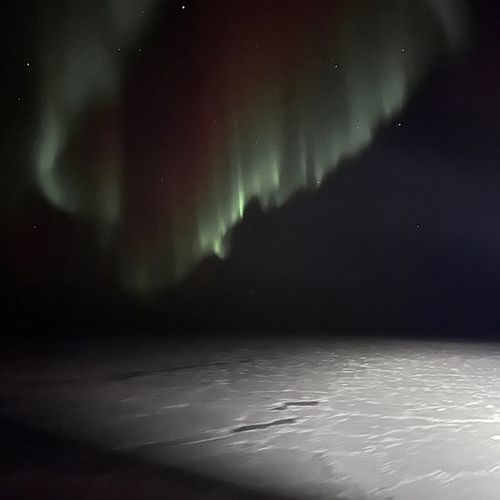12 January 2024 blog
By: Paul Renaud/Akvaplan-niva
Why does a group of 17 researchers cut short their holidays and leave home to board a ship headed to the Barents Sea in the middle of the Polar Night? January is known for changeable and often violent weather as Polar low-pressure systems form rapidly and sweep across the area. The darkness is nearly complete up here, with only a couple hours of faint light in the southern sky if it is not overcast. And sea ice forms and moves rapidly, changing sampling plans and restricting science activities.
But here we are, taking advantage of so-far surprisingly good weather (as mainland Norway is confronted with bitter cold, heavy snow, and heavy rains). Yes, the temperature gets down to -19C and sampling gear – and the ship's winches – freeze. The sea ice prevents us from reaching several of our target stations, and ice on deck adds a degree of difficulty to all operations. But the experience, enthusiasm, and cooperative spirit of the scientific and ship's crews prevail and we are achieving our objectives.
So how does this happen? First, scientific curiosity drives us to conduct our work at a time when few have been here, trying to add a winter perspective to our understanding of the annual cycle of the marine ecosystem. Second, appreciation of rare opportunities – to watch as enormous amounts of heat are transferred from the ocean to the atmosphere in plumes of 'sea smoke,' to investigate bioluminescent zooplankton in nearly complete darkness illuminating the nets with blue flashes, to contemplate how small fish that form the diets of the vast commercial stocks of the Barents Sea survive the long period with minimal food. And third, each of us brings their personal perspectives, whether it is someone running up to the bridge to see her first sea ice, or a veteran of hundreds of days at sea in the Arctic taking yet another photograph of the seascape to perhaps find a little more nuance to her understanding of the vastness and diversity of the Arctic seas.
We are increasingly required to plan our work and present our results in the context of user needs. This is understandable and an important aspect of what we do. But it does not drive most of us. We each bring scientific interests and personal perspectives that fuel our desire to be 'out there' studying nature and pushing the science forward. Learning more about the world around us makes it easier to understand ourselves and our place in the world. It is at the same time personal and universal. This is what drives us, this is why we are here, and this is what will inspire us in whatever comes next.
**
The expedition is part of the Research Council of Norway funded project “Polar Front ecosystem studies using novel autonomous technologies: Knowledge for environmental management and assessing ecological risk” (PolarFront) with additional financial support from ConocoPhillips and Equinor. The project, which is led by Paul Renaud, Akvaplan-niva, focus is on the hydrographical, chemical and biological processes in the Barents Sea Polar Front region.
More about the Polar Front project here: https://www.akvaplan.niva.no/en/projects-networks/polar-front-ecology/

